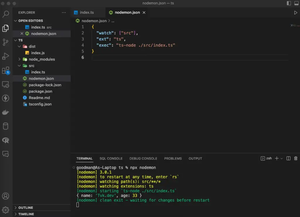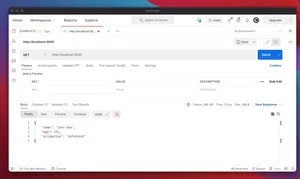Storing JSON data effectively in MongoDB via Mongoose entails understanding Schemas, data types, and methods for handling complex structures. This tutorial covers everything from basic setup to advanced concepts with practical examples.
Initializing Your Project
To start working with Mongoose and MongoDB, you need an initialized node project with the necessary modules. To set this up, use the following commands:
mkdir myjsonapp
cd myjsonapp
npm init -y
npm install mongoose
Connecting Mongoose to MongoDB
Establish a connection to MongoDB using Mongoose with this snippet:
const mongoose = require('mongoose');
mongoose.connect('mongodb://localhost/mydatabase', { useNewUrlParser: true, useUnifiedTopology: true });
Creating a Schema
Define a Mongoose schema that can accommodate a flexible JSON object:
const Schema = mongoose.Schema;
const jsonSchema = new Schema({ any: Schema.Types.Mixed });
Creating a Model
Once your schema is defined, create a model to interact with:
const JSONModel = mongoose.model('JSON', jsonSchema);
Basic CRUD Operations
Learn how to perform create, read, update, and delete operations:
Creating Documents
Create a new document within your JSON collection:
JSONModel.create({ any: { key: 'value' } })
.then(doc => console.log(doc))
.catch(err => console.error(err));
Reading Documents
Retrieve documents using simple queries:
JSONModel.find({ 'any.key': 'value' })
.then(docs => console.log(docs))
.catch(err => console.error(err));
Updating Documents
Here’s how to update documents in your collection:
JSONModel.updateOne({ 'any.key': 'value' }, { 'any.key': 'new value' })
.then(result => console.log(result))
.catch(err => console.error(err));
Deleting Documents
Delete documents with a specified condition:
JSONModel.deleteOne({ 'any.key': 'value' })
.then(result => console.log(result))
.catch(err => console.error(err));
Advanced Concepts
Dive into more complex use-cases such as nested schemas, validation, and indexing:
Nested Schemas
To handle nested JSON structures, create schemas for inner objects:
const childSchema = new Schema({ name: String });
const parentSchema = new Schema({ children: [childSchema] });
const Parent = mongoose.model('Parent', parentSchema);
Schema Validation
Ensure that your JSON data adheres to a certain format with Mongoose validation:
const validatedSchema = new Schema({
name: { type: String, required: true },
age: { type: Number, min: 18, required: true }
});
const ValidatedModel = mongoose.model('Person', validatedSchema);
Indexing for Performance
Speed up queries by defining indexes in your schema:
jsonSchema.index({ 'any.key': 1 });
JSONModel.createIndexes();
Conclusion
This tutorial has guided you through the process of storing and managing JSON data using Mongoose in a MongoDB database. By exploring schema creation, document manipulation, and advanced features, you’re now ready to build robust applications capable of handling complex JSON datasets.

